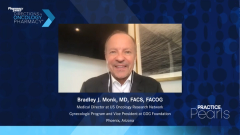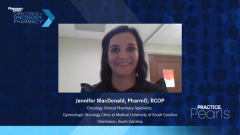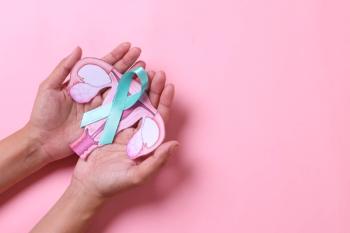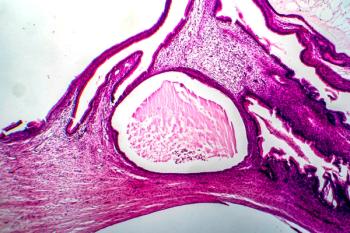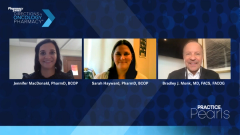
Practice Pearl 2: Educating Patients on Maintenance Therapy in Ovarian Cancer
Experts in gynecologic oncology provide insight on educating patients with ovarian cancer on the duration of maintenance therapy.
Episodes in this series

Jennifer MacDonald, PharmD, BCOP: Sarah, when I educate patients, I try to paint the picture for them about start point vs end point. I’m assuming you do something very similar as far duration of therapy.
Sarah Hayward, PharmD, BCOP: Yes, absolutely. Thank you for asking. That’s definitely something that I make sure the patients are aware of if that hasn’t already been explained to them. A lot of times, they ask. They hear maintenance, and maintenance sounds like forever. But, yes, we do that for the BRCA frontline olaparib [Lynparza] for 2 years as Dr Monk mentioned. It’s the same with PAOLA-1. We have 2 years of olaparib and 15 months with bevacizumab [Avastin] in that one.
Bradley J. Monk, MD, FACS, FACOG: Yes.
Jennifer MacDonald, PharmD, BCOP: Yes.
Sarah Hayward, PharmD, BCOP: And then with the niraparib [Zejula], I tell them at least 3 years.
Jennifer MacDonald, PharmD, BCOP: That’s a little gray area.
Sarah Hayward, PharmD, BCOP: We’re going to do 3 years and then see where we stand. Then when we get into the other second-line maintenance and treatment, that’s obviously a different conversation.
Bradley J. Monk, MD, FACS, FACOG: Until progression.
Jennifer MacDonald, PharmD, BCOP: Definitely. Dr Monk can probably comment on this, too. Obviously, that conversation shifts if they have residual disease after they finish their chemotherapy and you’re putting them on maintenance.
Bradley J. Monk, MD, FACS, FACOG: The challenge, which both of you can attest to it, is that we paint a somewhat false picture that they do so well with frontline chemotherapy that somehow their prognosis is good. It’s the same thing with the use of bevacizumab. If chemotherapy works, why would I add bevacizumab? And 6 months isn’t that much. You can’t think that way. So you guys are committed to giving and developing medicines for these patients. The key point in all of this conversation is that you’re probably going to die if you get stage 3 or 4 ovarian cancer, but the good news is we have PARP inhibitors and bevacizumab to impact that, and in some settings probably help you live longer and also live better. You have to set that landscape for people to buy into it. But if you think the patient’s cured and you don’t like the inconvenience of bevacizumab, PARP, or both, you’re not going to have buy-in.
Jennifer MacDonald, PharmD, BCOP: Yes. One of the things that you bring up, which probably has come up for both of you, is sometimes we get patients with stage 2 disease who have a BRCA mutation or other patients and we get tempted. But just to reiterate, these studies were all in stage 3 and 4 patients. They weren’t in earlier-stage patients. We’re going to focus on the label, not so much on some of those maybe one-off or other patients that you might consider it for. But I did want to iterate that for the audience that these studies were just in stage 3 and 4 patients.
Bradley J. Monk, MD, FACS, FACOG: Let me just interject there. But if you have a stage 2 cancer, you have a 70% chance of dying. It’s a little better. It’s not 80%. And if you have a stage 2 fallopian tube cancer, you have a 50% chance of dying. You saw the breast cancer indication now for maintenance for BRCA olaparib. The risk is still very high. These medicines, with your help, are very well tolerated, so I think it’s a shared decision.
Jennifer MacDonald, PharmD, BCOP: Yes.
Transcript Edited for Clarity
Newsletter
Stay informed on drug updates, treatment guidelines, and pharmacy practice trends—subscribe to Pharmacy Times for weekly clinical insights.


